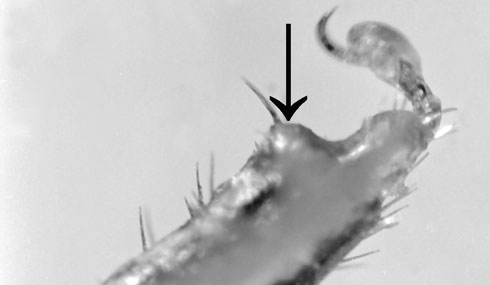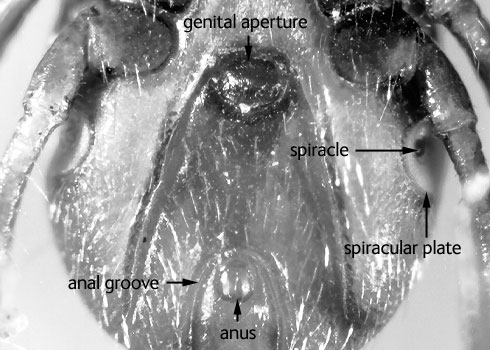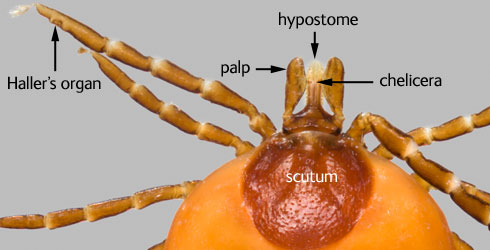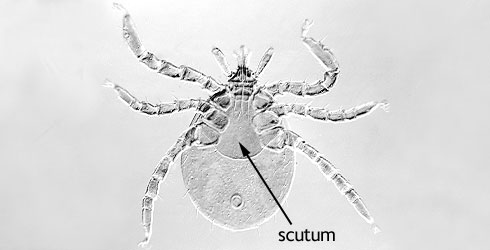Ixodes ricinus
Ixodes ricinus is a geographically widespread species and is Europe’s commonest tick. It has been collected throughout the British Isles.
Like all other ticks, Ixodes ricinus is a blood-feeding ectoparasite of vertebrates. Its hosts are mainly small to large mammals, but birds and sometimes reptiles are also parasitised.
Egg-laying and moulting occur away from the host, ideally in thick vegetation that maintains a humid atmosphere within it.
Infestations can cause a decline in host health due to blood loss. Also tick paralysis, thought to be a result of a neurotoxin introduced during feeding, may occur. However, Ixodes ricinus is most well-known as a vector of diseases, particularly Lyme borreliosis (Lyme disease).
Species detail
-

Taxonomy
Ixodes ricinus is a hard tick with large mouthparts at all stages of its life. Get a grasp of this tick’s appearance.
-

Distribution and habitat
This tick species can be found throughout the western Palaearctic region and lives on a variety of vertebrates including humans. So, where should you watch out for it?
-

Biology
Ixodes ricinus is a 3-host tick- the larva, nymph and adult stages all live on separate host individuals. The lifecycle takes up to 6 years to complete. Find out more.
-

Behaviour
This tick transmits a variety of disease-causing germs including a spirochaete called Borrelia burgdorferi that causes Lyme disease. Find out which other infectious organisms it spreads.
-

Feeding
This tick is well adapted for seeking out and hanging on to its hosts. Once attached, the tick feeds for days, enabling the adult female to quadruple in length. Find out how this tiny blood-sucking arthropod gets a meal.
-

References
Get more references for Ixodes ricinus.
Images

Tarsus I of Ixodes hexagonus has a hump (arrowed) near its tip – this is missing in Ixodes ricinus. Photo credit: Peter York, NHM.

Ixodes ricinus adults and nymphs have a long, slender internal spur on leg coxae I, while all coxae have a small external spur. Photo credit: Peter York, NHM

Ixodes ricinus female in dorsal view. Photo credit: Harry Taylor, NHM

Spiracular plates are characteristic of ticks. Only Ixodes species have the anal groove arching in front of the anus. The genital aperture in female Ixodes ricinus is between the bases of the last legs.
Photo credit: Peter York, NHM

The upper body surface of female Ixodes ricinus is only partly covered by the scutum. The gnathosoma (hypostome, palps and chelicerae) is large and clearly visible. The depression at the end of the first leg is a Haller’s organ.
Photo credit: Harry Taylor, NHM

Ixodes ricinus larvae have three pairs of legs and the dorsal scutum only partly covers the body.
Photo credit: Peter York, NHM

The upper body surface of male Ixodes ricinus is almost completely covered by the scutum.
Photo credit: Peter York, NHM

Before a tick feeds, its chelicerae pierce the host’s skin prior to feeding. The toothed hypostome anchors the tick to its host. Setae at the tip of the palps are involved in host detection.
Photo credit: Peter York, NHM
About the author
A word from the author
'Ixodes ricinus, famous as a vector of Lyme disease, is often picked up by people and their pets when out for a walk. This can happen even in parks within urban areas. Despite this, there is little easily accessible information to help those affected identify and find out about the life of this tick.'

